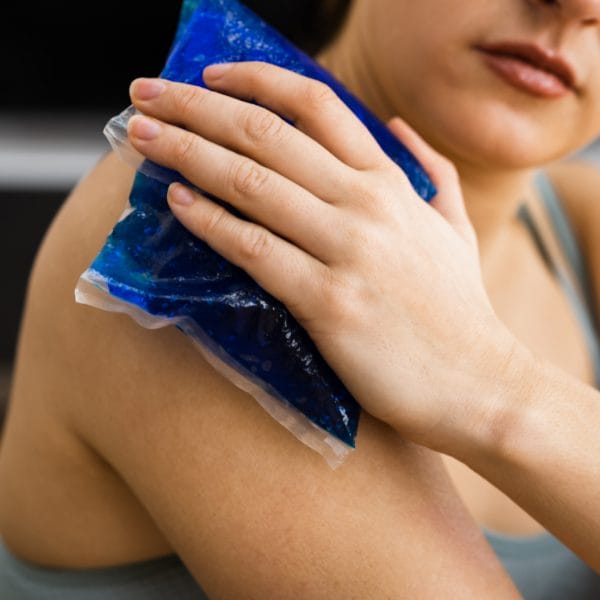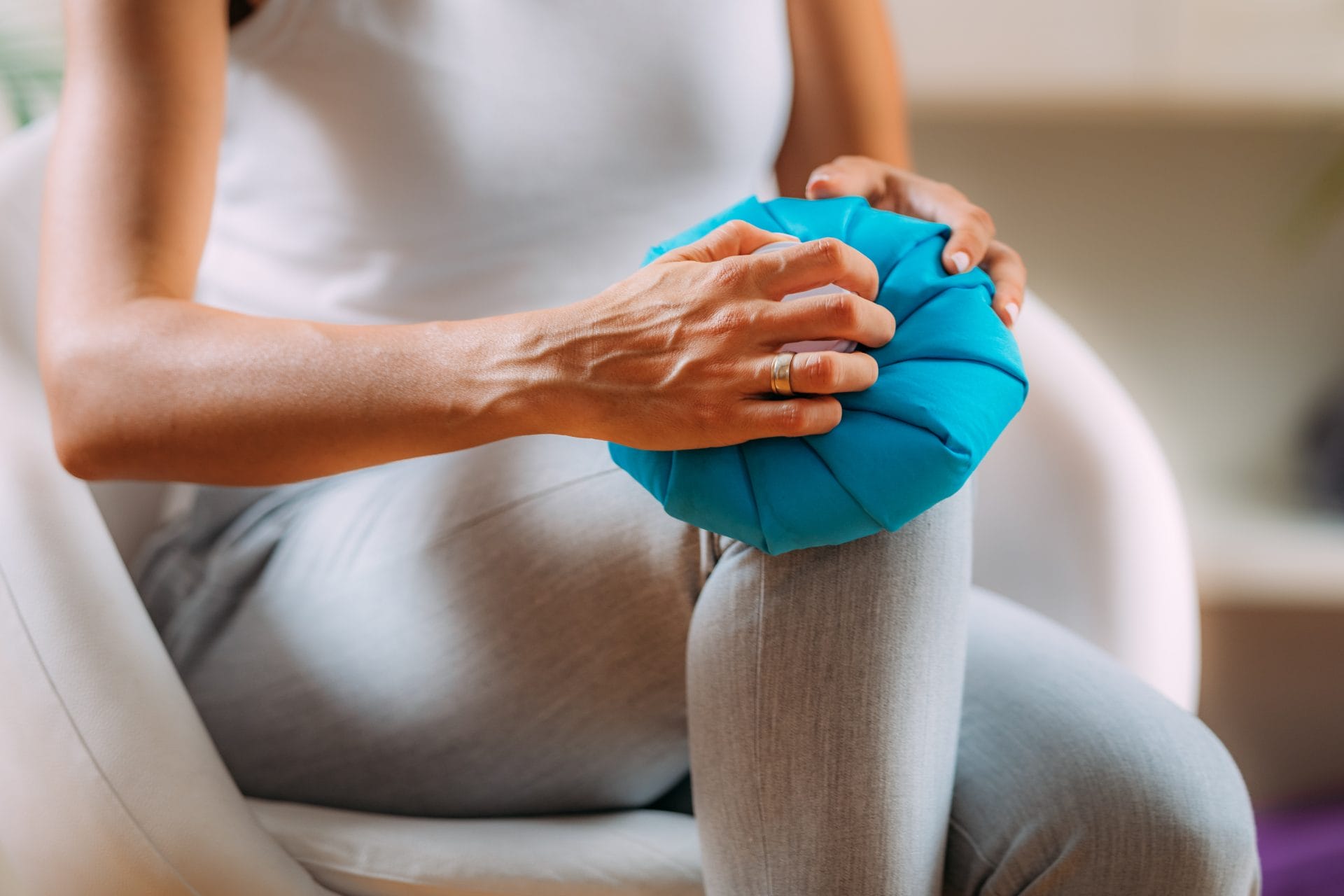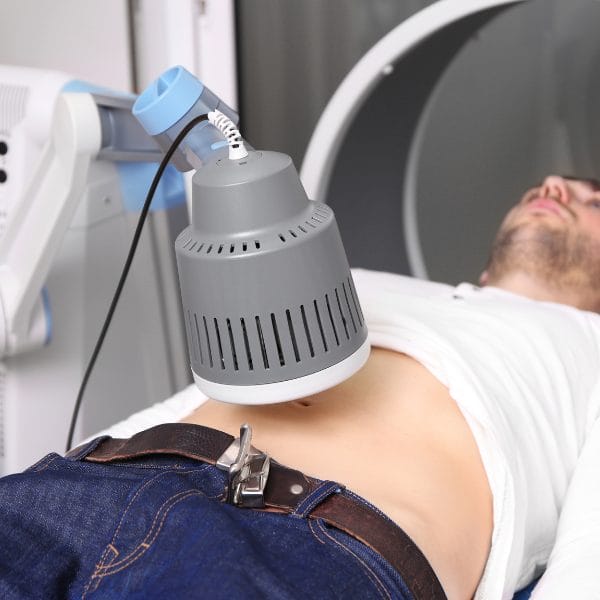Heat or Cold for Back Pain
If you are experiencing back pain, you may be wondering if heat or cold therapy is a good idea. The answer may depend on the severity and type of pain you are experiencing.
PostureGeek.com Tweet
Back pain is a common problem that can be caused by various things, such as muscle strain, nerve compression, or arthritis. If you are experiencing back pain, you may be wondering if heat or cold therapy is a good idea. The answer may depend on the severity and type of pain you are experiencing.
What are heat and cold treatments?

Heat therapy, also called thermotherapy, uses heat in medical treatment. Cold therapy, also called cryotherapy, uses low temperatures in medical treatment. Thermotherapy and cryotherapy can treat a wide range of conditions and injuries.
What are some conditions that can be treated with heat or cold therapy?
Conditions that can be treated with heat or cold therapy include:
- Arthritis
- Back pain
- Bursitis
- Carpal tunnel syndrome
- Gout
- Muscle pain
- Sciatica
- Tendonitis
What is best: heat or cold for back pain?
This is a common question, especially when dealing with sudden onset back pain. While there are benefits to both heat and cold therapy, it is important to understand when each modality is appropriate to maximize the relief you experience.
If you have ever suffered from back pain, you know how debilitating it can be. Back pain can make it difficult to do even the simplest tasks, like getting out of bed in the morning. Fortunately, several treatment options are available to help you manage your pain and get back to your routine.
So, which is best for back pain: heat or cold? The answer may depend on the severity and type of pain you are experiencing. If you have sudden onset back pain, you may benefit from cold therapy. If you have chronic back pain, you may benefit from heat therapy.
If you are unsure which treatment option is best for you, talking to your doctor or health care provider is always a good idea. They can help you decide which treatment option is best for your individual needs.
What are the risks associated with this treatment?

There are some risks associated with heat or cold therapies. These risks include:
- Burns: You can burn yourself if you use too much heat or leave a heat source on for too long.
- Frostbite: You can get frostbite if you use too much cold or leave a cold source on for too long.
- Dehydration: You can become dehydrated if you do not drink enough fluids while using heat therapy.
- Nerve damage: You can damage the nerves in your skin if you use too much cold or leave a cold source on for too long.
What are the three important rules of using heat and cold therapy?
Here are three rules to remember when using heat or cold therapy:
- Always use a towel, cloth, or another barrier between your skin and the heat or cold source.
- Do not leave the heat or cold source on for more than 20 minutes.
- Drink plenty of fluids while using heat or cold therapy.
If you are experiencing back pain, you may be wondering if heat or cold therapy is a good idea. The answer may depend on the severity and type of pain you are experiencing. First, talk to your doctor or health care provider to see which treatment option is best for you.
Guidelines to use heat and cold for different types of back pain
Despite people preferring one treatment over another, certain conditions respond better when specific treatments are used.
PostureGeek.com Tweet

Despite people preferring one treatment over another, certain conditions respond better when specific treatments are used.
Ice your back immediately after exercise to reduce muscle soreness
Suppose you have just started a new workout routine. It is not uncommon to experience some muscle soreness a day or two after exercise. This is especially true if the muscles are being worked in a new way. Applying ice to the sore muscles can help reduce inflammation and pain.
Use cold first and then apply heat for acute back pain
Acute back pain is typically the result of an injury, such as falling or lifting something heavy. Cold therapy can help reduce inflammation and pain in the first few days after the injury. Once the acute phase has passed, heat therapy can help increase blood flow to the area and relax the muscles.
Use heat first and then apply ice for chronic back pain
Chronic back pain is typically a long-term problem, such as arthritis. In this case, heat therapy can help relax the muscles and increase blood flow to the area. Once the chronic phase has passed, cold therapy can help reduce inflammation and pain.
Try continuous low-level heat for sub acute or chronic back pain
If you have sub acute or chronic back pain, you may benefit from continuous low-level heat therapy. This type of therapy uses a heat source, such as a heat pack, to provide constant low-level heat to the affected area. This can help increase blood flow and relax the muscles.
HEAT THERAPY

Heat therapy involves applying heat to the area that is hurting to increase blood flow and relax the muscles. This can help to decrease pain and stiffness in the area.
Heat therapy is generally recommended for chronic back pain, arthritis, or bursitis.
Are there different types of heat therapy?

Yes. Types of heat therapy include:
- Dry heat includes infrared heat lamps, saunas, and steam baths.
- Moist heat includes hot packs, heating pads that use water or gel, and whirlpools.
- Short-wave diathermy: This type of electromagnetic radiation penetrates deeply into the tissues. It is used to treat deep muscle pain and stiffness.
How does heat therapy work?
Heat therapy works by increasing blood flow to the area experiencing pain. This increased blood flow helps to reduce inflammation and relax muscles.
What are the benefits of heat therapy?
- increase blood flow
- decrease joint stiffness
- relax muscles
- reduce spasms
- decrease pain
Heat therapy is often recommended for conditions such as arthritis, bursitis, muscle strains and sprains, and tension headaches.
What type of back pain is relieved by heat?
Heat can be used to relieve all types of back pain, including:
- muscular pain
- joint pain
- arthritis pain
- nerve pain
What are the risks of heat therapy?
The risks of heat therapy include:
- burns
- dehydration
- dizziness
- nausea
If you are pregnant, have a medical condition, or take medication, it is essential to talk to your doctor before starting any type of heat or cold therapy.
COLD THERAPY

Cold therapy involves applying cold to the area that is hurting to reduce swelling and pain. It is often used after an injury or surgery to help reduce the symptoms of pain and swelling.
Cold therapy is generally recommended for people with acute back pain or those who have recently injured their back.
Are there different types of cold therapy?
Yes. This includes:
- Ice packs: These are usually made of gel or ice wrapped in a towel. They can be bought at most drugstores.
- Cold baths and showers: You can only do this for a short time, as it can cause shivering.
- Cryotherapy chambers: These chambers have very cold air and are sometimes used to treat conditions such as multiple sclerosis and rheumatoid arthritis.
How does cold therapy work?
Cold therapy works by numbing the nerves in the area experiencing pain. This numbing effect helps to reduce inflammation and muscle spasms.
What can you use from home as a cold option?

There are several things found within your refrigerator that can assist you. You can use:
- a bag of frozen peas or corn,
- frozen vegetables,
- a frozen gel pack,
- or even a bag of ice wrapped in a towel.
What are the benefits of cold therapy?
Cold therapy can:
- decrease pain
- reduce swelling
- slow the flow of blood to an area
- Cause muscles to contract
- decrease inflammation
- decrease muscle spasms
- decrease pain
The most common use of cold therapy is to reduce the symptoms of pain and swelling after an injury. However, it is also used to treat conditions such as ankle sprain, muscle strain, and post-operative pain.
What type of back pain is relieved by cold?
Cold therapy is most commonly used to relieve back pain that is caused by inflammation, such as:
- post-operative pain
- inflammatory arthritis
- whiplash
What are the risks of cold therapy?
The risks of cold therapy include:
- frostbite
- skin irritation
If you are pregnant, have a medical condition, or take medication, it is essential to talk to your doctor before starting any type of heat or cold therapy.
Ice therapy: scenarios when it's good for back pain (e.g., Lower Back Strain)
- If you have a lower back strain, using ice therapy can help to reduce inflammation and pain. Applying ice for 15-20 minutes every 2-3 hours can help to improve your symptoms. Make sure to wrap the ice in a towel so that it does not touch your skin directly.
- You can also use ice therapy immediately after injuring your back to help reduce swelling. Applying ice for 20-30 minutes every 2-3 hours for the first few days can help to reduce inflammation and pain.
What should you do before you start heat or cold therapy?
Before you start, you should:
- Check with your doctor: You should check with your doctor before starting any new medical treatment. This is especially important if you have a medical condition or are taking medication.
- Stop using if it hurts: If heat or cold therapy is causing you pain, stop using it and contact your doctor.
- Drink plenty of fluids: You should drink plenty of fluids while using heat therapy to prevent dehydration.
- Wear loose clothing: You should wear loose clothing while using heat therapy to allow the heat to penetrate the area you are treating.
- Remove jewelry: You should remove any jewelry before using heat therapy, as it can get hot and cause burns.
- Do not use on open wounds: You should not use heat or cold options on open wounds.
Contrast Therapy: alternating between heat and cold therapies for back pain
If you are experiencing back pain, you may be wondering if alternating between heat and cold is a good idea. The answer may depend on the severity and type of pain you are experiencing.
How are alternating heat and cold therapies applied?
There are a few ways you can alternate between heat and cold therapies:
- Change the temperature of the water you are using: If you are using a bath, change the temperature of the water from hot to cold or vice versa.
- Use different types of therapy: You can use different types of treatment, such as using an ice pack followed by a heating pad.
- Switch back and forth: You can alternate between heat and cold therapies by applying heat for a few minutes and then cold for a few minutes. This can be done several times throughout the day.
What are the benefits of alternating heat and cold therapies?
A benefit of alternating between hot and cold therapy is that it can help to increase blood flow to the area. This can help to reduce pain and swelling. Another benefit of alternating between hot and cold therapy is that it can help to reduce muscle spasms.
The benefits of alternating heat and cold therapies include:
- reducing inflammation
- pain relief
- relieving muscle tension
- increasing circulation
- stimulating the release of endorphins
FAQ's
Should I heat or ice first?
If you have a new injury, you should ice first to reduce swelling. If you are dealing with chronic pain, you can alternate between heat and cold.
Can I use heat if I am pregnant?
You should check with your doctor before using any type of heat therapy if you are pregnant.
Can I use cold if I have diabetes?
You should check with your doctor before using cold therapy if you have diabetes.
Can I use a heating pad on my back?
Yes, you can use a heating pad on your back. However, you should wear loose clothing and remove any jewelry before using the heating pad. You should also not use heat on open wounds.
When should I consider using cold or heat therapy?
If you are experiencing pain, swelling, or inflammation, you may want to consider using cold or heat therapy. Cold therapy can help pain relief and swelling, while heat therapy can help to relax muscles and increase blood flow to the area. As always, you should consult your health care provider.
Can heat or cold therapy help delayed onset muscle soreness (DOMS)?
There is mixed evidence on whether or not heat or cold therapy can help reduce delayed onset muscle soreness (DOMS). Some studies have found that heat therapy can help reduce DOMS, while others have found that cold therapy can help reduce DOMS.
More research is needed to determine if one modality is better than the other for reducing DOMS. If you are experiencing DOMS, it is good to experiment with both heat and cold therapy to see which one provides the most relief.
How effective is heat or cold therapy?
Heat and cold therapy are both effective in reducing pain. However, they work in different ways. Heat therapy is more effective at reducing inflammation, while cold treatment is more effective at pain relief.
How long should I use heat or cold therapy?
The amount of time you use cold or heat therapy will depend on the type of therapy you are using, the severity of your pain, and your personal preference. You may want to start with shorter periods and increase as needed.
The length of time that you should use heat or cold therapy will depend on the severity and type of pain you are experiencing. If you are using heat therapy, it is generally recommended to use it for 15-20 minutes. If you are using cold treatment, it is usually recommended to use it for 10-15 minutes at a time.
When should I avoid using heat or cold therapy?
There are certain times when you should avoid using heat or cold therapy. For example, suppose you have open wounds, infections, or skin conditions like eczema. In that case, you should avoid using heat or cold therapy. You should also avoid using heat therapy if you are pregnant.
If you are unsure whether or not heat or cold therapy is right for you, it is always a good idea to talk to your doctor or health care provider. They can help you decide which treatment option is best for your individual needs.
What is an ice bath?
An ice bath is a bath filled with ice and cold water. It is used to reduce inflammation and relieve pain.
Finally
In conclusion, there are many benefits of heat and cold therapy. While both heat and cold therapies have benefits, it is essential to understand when each is most appropriate to maximize the relief you experience. Talk to your doctor or health care provider if you are unsure which treatment option is best for you.
PLEASE NOTE
PostureGeek.com does not provide medical advice. This information is for educational purposes only and is not intended to be a substitute for professional medical attention. The information provided should not replace the advice and expertise of an accredited health care provider. Any inquiry into your care and any potential impact on your health and wellbeing should be directed to your health care provider. All information is for educational purposes only and is not intended to be a substitute for professional medical care or treatment.
